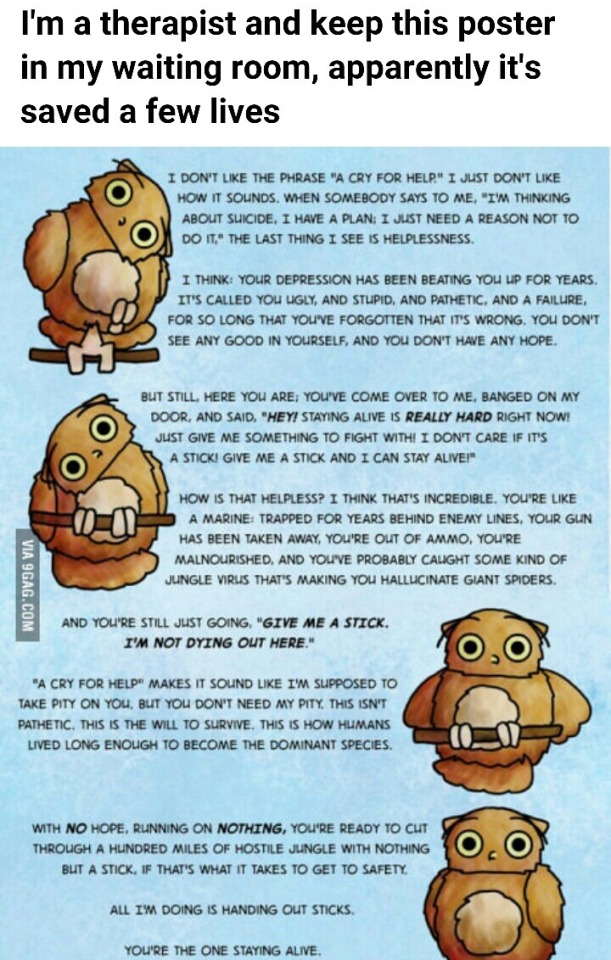Photo
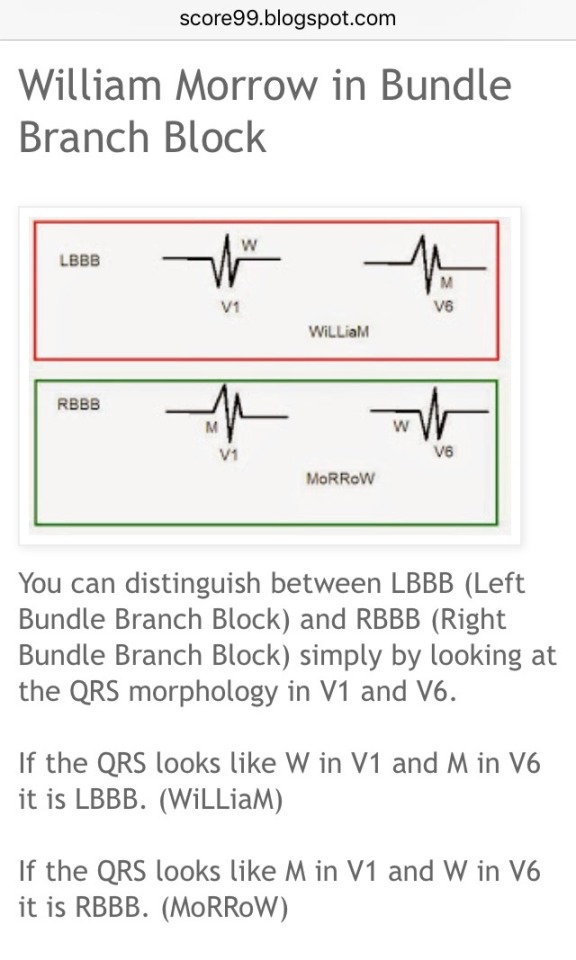
Doing the entire EKG series by DrNajeeb with Boots…because break is for cooking, skiing and Najeebing😉⛄️
598 notes
·
View notes
Photo










16 Easy and Delicious Sweet Potato Recipes
Sweet Potato Soup
Roasted Sweet Potato
Sweet Potato Burger
Baked Sweet potato fries
Salt and Vinegar Sweet Potato Chips
Hasselback Sweet Potatoes
Sweet Potato Hash with Avocado Sauce
Sweet Potato Noodles
Twice Baked Greek Sweet Potatoes
Keep reading
6K notes
·
View notes
Photo
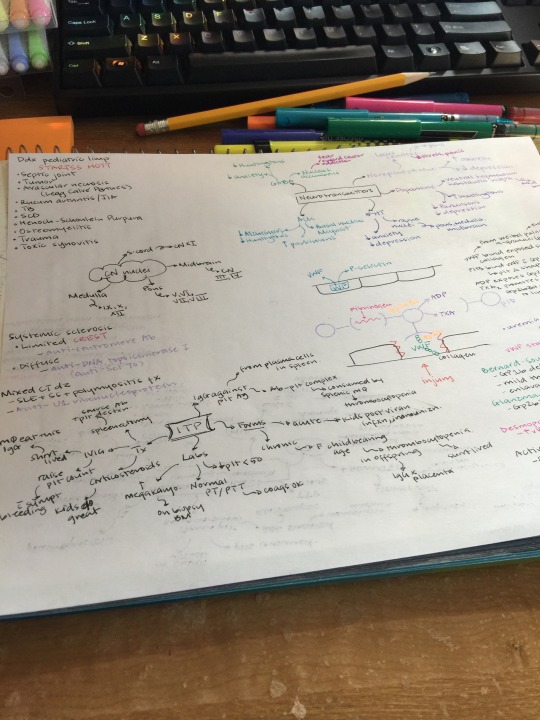

Knee deep in step 2 studying. Back to uworld I go!
1 note
·
View note
Link
AS PROMISED, IT HAS ARRIVED.

What this is: ideas and tips from a soon-to-be R2 who has survived intern year to help you function as an effective intern so you can focus on the important things: caring for your patients, learning and growing as a physician
What this is not: an encyclopedia, a bible you follow to the letter. The Immutable Truth of Intern Year Reality. This is not going to teach you medicine. This is not geared toward a specific specialty; it is designed to be helpful to an intern starting in any specialty training program.
Where did the self-care part go? For every time I attempted to write it or sought folks to help me write it, I came to realize that everyone’s idea of self-care is different. The basic tenet of self-care in intern year is: remember that if you don’t care for yourself, who will care for your patients? So remember that you deserve and need time and attention for your sanity. And everyone gets by better when they help each other.
Please feel free to download and use. Please let me know too if I’ve made any errors or if there are things that require editing!! GIVE ME FEEDBACK SO THIS CAN GET BETTER WITH TIME.
2K notes
·
View notes
Text
Nobody said #AllLivesMatter until we said #BlackLivesMatter
Nobody said #HeterosexualPrideDay until we had #GayPride
Nobody wants #WhiteHistoryMonth until its #BlackHistoryMonth
Nobody mentions #MensRights until we talk about #Feminism
This shows me that you don’t actually care about these things, you just want all the “minorities” to shut up so the status quo never changes.
162K notes
·
View notes
Photo
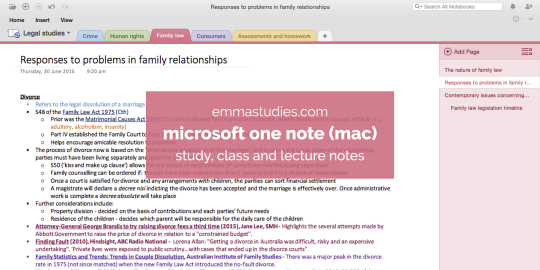


Microsoft OneNote tutorial for study, class and lecture by emmastudies
Hello! I have had numerous people message me about how I structure my notes for OneNote so I thought I would put together a tutorial! Above is a small run down of the program and my little two cents on each feature. But now I’m going to go into a little more detail to help anyone who is looking for somewhere to type their notes. Through I’ll suggest my ideas on how to use OneNote for different reasons including study notes, class notes and lecture/tutorial notes.
Set up and use:
Start by downloading OneNote from the App Store or from their website if you’re using a PC. It is free!!! I would definitely recommend downloading the mobile or tablet app as well.
Sign in with an Outlook account and begin making your notebooks. For high school I would suggest a new notebook for each class. For university, I had one notebook for the entire semester. As I go into my second semester I’ll make a new one, and so one. For study notes, it is up to you. You could either make one notebook for all your study notes and use sections to divide per subject or make a new notebook for each subject again. Or simply and a new section in the existing notebook. Notebooks are linked to OneDrive meaning you can close the notebook and reopen it at any time. They’re automatically saved too, so you can edit on your phone and when you use your computer it is updated!
Start creating sections. These act as dividers so depending how you have structured your notebook, make them for either each topic of your subject (high school) or each of your classes/subjects (university). For my high school class/study notes I made a new section for each new topic and for university I have one per subject. As you can see in the photoset; my notebook was legal studies (subject) and each section was for a topic (crime, human rights, family, consumers, assessments and homework).
Create your pages for each time you have class. Add the title of what you’re doing and start typing your notes. For my lectures I usually just name them “lecture 1”, “lecture 2” because I’m lazy, however for study notes I would use each subheading of the topic in the syllabus. If you’re wanting to understand my headings and subheadings completely I suggest checking out the legal studies syllabus that I created the above notes too (you can see it here on page 26).
Time for decoration and colour coding. Usually as I’m typing I bold or underline and colour code but you can always go back and do it as a revision method. This also gives you a chance to add any extra information you find! You can see an explanation of my colour code in the final image of the photoset. I found colour coding and formatting super helpful when I was studying for my HSC final exams!
Printing time! When I had finished my study notes (or class notes) I would print them so I had a physical copy to highlight and annotate. Here is where it gets a little fiddly. To print on one A4 size piece of paper without cutting off half your text, you need to shrink the size of the text box. This is what you might see - with half the text cut off. I would say reduce it to about half the original size - you can usually see on print preview how close it is to the edge. After you have made the textbox thinner, it should look like this. Another tip is printing using one sheet for two or more pages. This helps to reduce the amount of paper you’re using. On the print settings look for “pages per sheet” and change it to the number of pages you want (obviously the more pages, the smaller the font). It should look something like this (I’m not 100% sure if every computer or printer has this option, but for reference I use an Epson printer).
That is pretty much it for how I use OneNote for my all my different types of notes! It is very simple once you’ve organised everything! I would 100% recommend this program. We were advised to use it in year 9 when we received laptops from the government and I’ve not stopped using it. Althought there are some different between the Mac and PC versions, the main elements are the same. However you can check out this post by @vanesastudies which is for the PC version. I hope this tutorial was helpful. If there is anything I’ve missed out, drop me an ask. Thank you for reading! x
16K notes
·
View notes
Text
Wellen's syndrome
*Wellen’s syndrome is a characteristic T-WAVE on an electrocardiogram during a PAIN-FREE PERIOD in a patient with INTERMITTENT CHEST PAIN.
*T-wave changes represent reperfusion of the myocardium.
*This finding suggests a high-degree stenosis of the proximal LAD that will soon result in an acute anterior wall myocardial infarction (MI).
*Discovering Wellens’ syndrome is imperative as 75% of patients will develop acute anterior wall myocardial infarctions (MIs) within one week unless intervention is undertaken urgently- highly specific
There are two variations of Wellen’s syndrome T-wave. V2 and V3 are diagnostic leads but the T wave changes can be widely spread in more anterior chest lead is occlusion is more proximal.
Type A -75% of cases
deeply and symmetrically inverted T-waves in V2 and V3.

Type B- 25% of case
biphasic, with the initial deflection positive and the terminal deflection negative T-waves in V2 and V3.

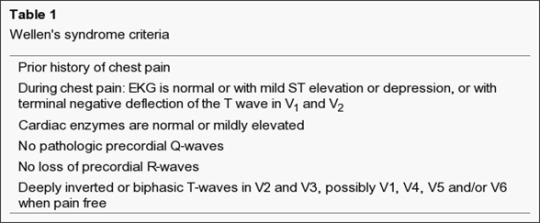
Reference
http://www.ncbi.nlm.nih.gov/pmc/articles/PMC2776372/
http://lifeinthefastlane.com/ecg-library/wellens-syndrome/
44 notes
·
View notes
Link
Forget overpriced schools, long days in a crowded classroom, and pitifully poor results.
These websites and apps cover myriads of science, art, and technology topics.
They will teach you practically anything, from making hummus to building apps in node.js, most of them for free.
There is absolutely no excuse for you not to master a new skill, expand your knowledge, or eventually boost your career.
You can learn interactively at your own pace and in the comfort of your own home. It’s hard to imagine how much easier it can possibly be.
Honestly, what are you waiting for?
Take an online course
edX — Take online courses from the world’s best universities.
Coursera — Take the world’s best courses, online, for free.
Coursmos — Take a micro-course anytime you want, on any device.
Highbrow — Get bite-sized daily courses to your inbox.
Skillshare — Online classes and projects that unlock your creativity.
Curious — Grow your skills with online video lessons.
lynda.com — Learn technology, creative and business skills.
CreativeLive — Take free creative classes from the world’s top experts.
Udemy — Learn real world skills online.
Learn how to code
Codecademy — Learn to code interactively, for free.
Stuk.io — Learn how to code from scratch.
Udacity — Earn a Nanodegree recognized by industry leaders.
Platzi — Live streaming classes on design, marketing and code.
Learnable — The best way to learn web development.
Code School — Learn to code by doing.
Thinkful — Advance your career with 1-on-1 mentorship.
Code.org — Start learning today with easy tutorials.
BaseRails — Master Ruby on Rails and other web technologies.
Treehouse — Learn HTML, CSS, iPhone apps & more.
One Month — Learn to code and build web applications in one month.
Dash — Learn to make awesome websites.
Learn to work with data
DataCamp — Online R tutorials and data science courses.
DataQuest — Learn data science in your browser.
DataMonkey — Develop your analytical skills in a simple, yet fun way.
Learn new languages
Duolingo — Learn a language for free.
Lingvist — Learn a language in 200 hours.
Busuu — The free language learning community.
Memrise — Use flashcards to learn vocabulary.
Expand your knowledge
TED-Ed — Find carefully curated educational videos
Khan Academy — Access an extensive library of interactive content.
Guides.co — Search the largest collection of online guides.
Squareknot — Browse beautiful, step-by-step guides.
Learnist — Learn from expertly curated web, print and video content.
Prismatic — Learn interesting things based on social recommendation.
Bonus
Chesscademy — Learn how to play chess for free.
Pianu — A new way to learn piano online, interactively.
Yousician— Your personal guitar tutor for the digital age.
117K notes
·
View notes
Photo

Excited to test this baby out. Let the gains being....
0 notes
Photo

Oreo Ice Cream Dessert
Really nice recipes. Every hour.
Show me what you cooked!
1K notes
·
View notes
Photo
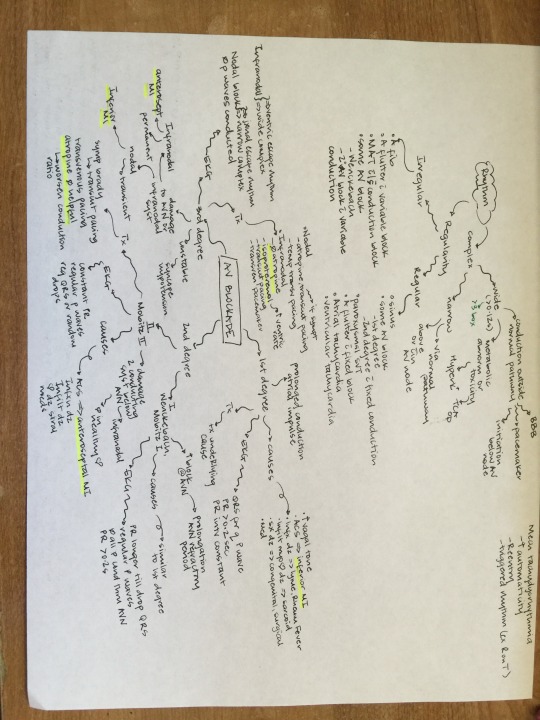
So much to study 😩
4 notes
·
View notes
Text
Basics for the Wards: How to Read EKGs
I’m on cardiology right now, and yesterday the fellow taught us some basics for interpreting EKGs. The trick is the have a thorough algorithm and do it every time so you don’t miss anything.
Disclaimer: Obviously this is just a cursory intro so folks won’t look like complete fools like me- who, when asked to interpret an EKG, went into a cold sweat and said, “Well, it looks like the heart is beating.” Attendings do NOT like that.
INTRO

This is what a normal lead II EKG one beat reading should look like. TAKE NOTE LITERALLY EVERYONE STOP CALLING YOUR SQUIGGLY LINES HEARTBEATS IT IS WRONG GAAAHHHH.
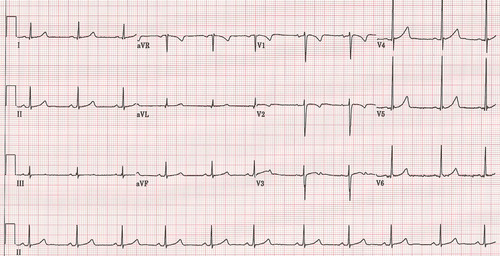
Normal EKG.


What the various leads are monitoring.
1. Rhythm: Sinus or not- aka, is the SA node talking to the AV node correctly?
Check in leads V1 and II- if there is a P wave before every QRS you have sinus rhythm. If this is not the case, you do not have sinus rhythm! A whole discussion on things messing up sinus rhythm will come when I have a better grip on it myself.
2. Rate: How fast is the heart beating- aka, how fast are the ventricles depolarizing?
So EKGs are little tiny boxes in bigger boxes, right? There are several methods for calculating rate using the boxes, but the one that works for my brain is to count the big boxes between R’s and divide that by 300.
So, 1 big box between R = 300/1 = 300 bpm.
2 big boxes between R= 300/2= 150 bpm. And so on.

In general, any heart rate above 100 is tachycardia, and any heart rate below 60 is bradycardia. These values may vary (ex: SIRS criteria counts heart rate above 90 as tachy). Normal heart rate is around 75 (exceptions include athletes- look up athletic heart syndrome)
3. QRS Complex: Wide or narrow- aka, is the Bundle of His bossing the ventricles around?
Basically, a nice narrow QRS complex generally indicates the bundle of His is intact and operating how it is supposed to. A wide QRS complex indicates something is awry with the Bundle of His- could be an organic pathology, could be a medication side effect (ex: antiarrythmics, TCAs, quinidine, to name a few), could be an electrolyte imbalance (ex: hyperkalemia), could be other things.
4. Axis: Is the heart depolarizing the way it should- aka right shoulder to left nipple.
I, personally, am still sorting out the axis system, and it’s hard to do in this format. The first, most basic place to start is checking if lead I and aVF are POSITIVE, meaning their QRS complexes go ABOVE the isoelectric line. If that is the case, you are probably ok axis-wise.


Essentially, lead I’s vector goes from left to right, and aVF’s vector goes from head to toe. So the average of those vectors is the general path of depolarization of the heart. You want the axis to be between -30 and +90.
So, if aVF is positive, but lead I is negative (the QRS is below the isoelectric line) that means it is going from left to right instead and would be classified as a right shift. Likewise, if lead I is positive, but aVF is negative, that means it is going down to up and would be classified as a left shift.
There is soooo much more to axis interpretation, this is just a starting point.
5. Intervals: Again with the conduction system, it’s, like, totally important that it obeys all the rules every time.
PR= <.2 seconds, or one big box
QRS= <.12 seconds, or 3 small boxes
QT= < ½ the RR interval

6. ST segment changes: checking for CAD- aka, is the myocardium getting enough blood/oxygen?
Since the folks in the South seem to consider butter a food group and know that if it can’t be fried it’s not worth eating, CAD is a huuuuuuuuge issue here. When blood supply to the myocardium is compromised, there will usually be characteristic EKG changes. Note- not every episode of angina/MI will have EKG changes though!
- Inferior leads –> right coronary artery.
- lateral leads –> circumflex artery
- anteroseptal leads –> left anterior descending.
Disclaimer: does not apply to everyone all the time, some folks have variant coronary anatomy.

So the EKG changes to look for must be seen in two contiguous leads, aka, two inferior leads or two lateral leads.
- Ischemia (low oxygen) = ST depression or T wave inversion (EXCEPT T wave inversions are ok in leads V1 and aVR)


- Injury = ST elevation
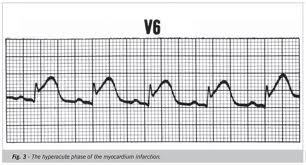
- Old infarct/dead myocardium = pathologic Q waves. Basically that first negative vector (aka, the Q of the QRS complex) should never be bigger than one tiny box.

And, that, friends, is a basic algorithm for reading EKGs! There is a lot more, but if you follow these steps every time, you will look like a rock star on wards. Good luck!

5K notes
·
View notes
Text
Most bang-for-buck things every intern should know before starting inpatient wards
Source. A collection of Meddit resources and advice on what bread-and-butter topics interns would most benefit from brushing up on/memorizing prior to the beginning of their internship.
1) Fluids. How and when to use them, dosage, timing and other pearls.
Review of fluids (not how to use them per se) by Dr. Strong /u/ericstrong
Maintenance Intravenous Fluids in Acutely Ill Patients - NEJM.
Pretty thorough review of fluid management on openanesthesia.org
2) Nausea. When to treat, how to treat and at what dose.
3) Standard pn orders: pain killers, sleep aids and antiemetics aka how to reduce nighttime calls from nurses by 25%
4) “Reflex” antibiotic choice for routine inpatient infections.
http://www.bpac.org.nz/Supplement/2013/July/antibiotics-guide.aspx /u/ChristianM and /u/ive_been_up_allnight
5) Initial work-up and treatment of dyspnea. (more realistic to approach by symptoms as, unfortunately, you first have to diagnose whats wrong. E.g. heart failure, pulmonary edema, embolism, COPD, pneumonia).
6) Initial work-up and treatment of oliguria/anuria.
7) A sensible initial approach to suspected ileus.
8) Blood. When, how, why to replace.
9) Pain. Optimal management without inducing narcosis.
Managing cancer pain: Frequently asked questions: CCJM
10) Potassium. When, why and how to shift or replace.
A review on both potassium and sodium disorders by Dr. Strong /u/ericstrong (Not reposted in 12) hyponatremia but applies there as well) https://www.youtube.com/playlist?list=PLYojB5NEEakXVIAapcSEleP4doUdHVtld
11) Hyponatremia. Most common electrolyte disturbance, commonly mismanaged.
12) Resuscitation aka commit the ACLS algorithms to memory.
Current ACLS guidelines. https://www.acls.net/aclsalg.htm
Would love a video series, interactive cases etc.
13) Basic EKG interpretation.
Whole EKG video courses
A whole free youtube EKG video review course by meddit’s own u/ericstrong
An alternative EKG course that takes you through all the basics. This however has no free version and costs 96$ a year. The quality is amazing. Here are 6 basic sample videos on youtube. The paid course is available on http://www.ecgteacher.com/
I have to admit I haven’t used this course personally but his free youtube videos are on-point and he seems like a good teacher. Also behind paywall. Free youtube samples are here. The full course can be found here https://www.ecgacademy.com.
EKG video cases
Amazing case-of-the-week emergency medicine EKG videos on youtube by Dr. Amal Mattu
– If you like Dr. Mattu’s cases (and you most certainly will) he is still posting every single week on his new site https://ecgweekly.com. It costs 4 starbucks coffees a year and is going to save someones life.
Practice EKGs with answers
Watching videos isn’t enough, you still have to grind out EKGs to keep your game strong. Visit http://ecgmadesimple.com and http://ecg.bidmc.harvard.edu/maven/mavenmain.asp for this.
EKG blogs
I recommend signing up for some kind of RSS feed (e.g. https://feedly.com/) and subscribing to the following EKG blogs:
http://hqmeded-ecg.blogspot.is (Dr. Smiths ECG blog)
http://www.ems12lead.com
http://ecg-interpretation.blogspot.is
http://jhcedecg.blogspot.is
EKG resource libraries
Life in the fastlane has a nice resource to look up a specific EKG finding, criteria or concept.
http://www.practicalclinicalskills.com/ekg.aspx /u/collidge
14) Know when to order ABGs and how to interpret them.
Almost too detailed video lecture series on ABGs and how to interpret them by Dr. Eric Strong (/u/ericstrong)
Practice makes perfect. ABG interpretation generator. https://abg.ninja/abg
Bonus 15) Basic CXR interpretation
CXR video lecture course
Again, Dr. Eric Strong has an excellent video course for free on youtube
Step-by-step guides to basic CXR interpretation
The Radiology Assistant: Chest X-ray - Basic interpretation
Radiology Masterclass step-by-step basic CXR
University of Virginia’s step-by-step basic CXR
All inclusive resources
The art and science of thoracic imaging All inclusive resource for all things thoracic! Jokes aside amazing resource.
UPenns CXR learning website
Loyola Universities excellent CXR Atlas Most outdated look but amazing content.
Checklist approach to CXR
Bonus 16) Overnight o-shit-what’s-that Head CT interpretation
Midnight radiology: Emergency CT of the head
University of Virginia’s guide to the Head CT
11K notes
·
View notes



